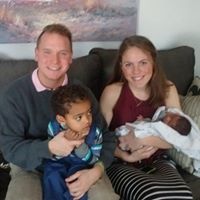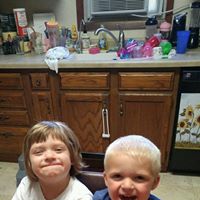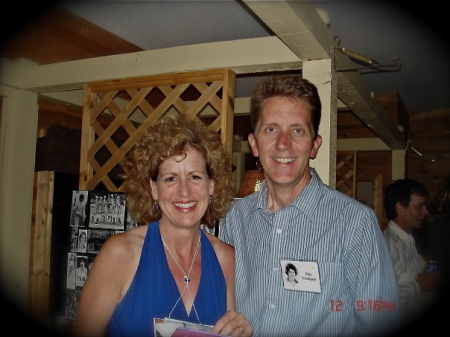Christine E Schmidt
age ~57
from Boonville, MO
- Also known as:
-
- Chris Schmidt
- Christy Schmidt
- Phone and address:
-
15181 Highway 5, Clarks Fork, MO 65233
(660)8386507
Christine Schmidt Phones & Addresses
- 15181 Highway 5, Boonville, MO 65233 • (660)8386507
- Speed, MO
- Columbia, MO
- Bunceton, MO
- Austin, TX
- Georgetown, TX
License Records
Christine Anne Schmidt
License #:
MLO.038486.000
Issued Date:
Apr 11, 2011
Type:
MORTGAGE LOAN ORIGINATOR
Registered Dental Hygienist
License #:
903010 - Expired
Issued Date:
Dec 15, 1993
Renew Date:
Mar 1, 2004
Expiration Date:
Feb 28, 2006
Type:
Dental Hygienist
Christine Marie Schmidt
License #:
32824 - Expired
Category:
Cosmetology
Issued Date:
Dec 1, 1983
Effective Date:
Mar 1, 1995
Type:
Cosmetologist
Christine Denise Schmidt
License #:
634 - Expired
Category:
Radiography
Issued Date:
Dec 16, 1998
Effective Date:
Feb 12, 2003
Expiration Date:
Dec 31, 2002
Type:
Limited Radiographer
Christine Lynn Schmidt
License #:
162 - Expired
Category:
Occupational Therapy
Issued Date:
Oct 4, 1988
Effective Date:
Aug 2, 1994
Type:
Occupational Therapist
Christine Marie Schmidt
License #:
31774 - Expired
Category:
Nursing
Issued Date:
Jan 21, 1977
Effective Date:
Nov 15, 2016
Expiration Date:
Oct 31, 2016
Type:
Registered Nurse
Christine Denise Schmidt
License #:
59632 - Active
Category:
Nursing
Issued Date:
Jun 11, 2002
Effective Date:
Jun 11, 2002
Expiration Date:
Oct 31, 2018
Type:
Registered Nurse
Us Patents
-
Biodegradable, Electrically Conducting Polymer For Tissue Engineering Applications
view source -
US Patent:6696575, Feb 24, 2004
-
Filed:Mar 27, 2002
-
Appl. No.:10/107705
-
Inventors:Christine E. Schmidt - Austin TX
Tyrell J. Rivers - Elkins Park PA -
Assignee:Board of Regents, The University of Texas System - Austin TX
-
International Classification:C07D29500
-
US Classification:548524, 252500
-
Abstract:The subject matter of the present invention includes a novel biodegradable conducting polymer for biomedical applications. The polymer combines mixed heteroaromatic conductive segments of pyrrole and thiophene with flexible aliphatic chains via degradable ester linkages. In addition to its utility for peripheral nerve regeneration, the polymer may be applied to other areas of tissue engineering, including spinal cord regeneration, wound healing, bone repair, muscle tissue stimulation, and other regenerative, restorative, reconstructive, therapeutic, prophylactic, and diagnostic functions.
-
Cell-Free Tissue Replacement For Tissue Engineering
view source -
US Patent:7402319, Jul 22, 2008
-
Filed:Sep 26, 2003
-
Appl. No.:10/672689
-
Inventors:Christine Schmidt - Austin TX, US
Terry Hudson - Barboursville VA, US -
Assignee:Board of Regents, The University of Texas System - Austin TX
-
International Classification:A61F 2/02
-
US Classification:424422, 424484, 623 1111, 623 2372
-
Abstract:The present invention is a natural, cell-free tissue replacement that does not require difficult or extensive preparation made by washing tissue replacement in a solution including one or more sulfobetaines and an anionic surface-active detergent and washing the tissue replacement in serial solutions of the buffered salt to remove excess detergent. The natural, cell-free tissue replacement may be a nerve graft that supports axonal regeneration, guides the axons toward the distal nerve end and/or is immunologically tolerated. Other forms of the invention are a composition and kit prepared by the method of making a native, cell-free tissue replacement. The present invention may be modified for use in diagnostic, therapeutic, and prophylactic applications.
-
Composition, Method And Use Of Bi-Functional Biomaterials
view source -
US Patent:7598344, Oct 6, 2009
-
Filed:Sep 4, 2003
-
Appl. No.:10/654623
-
Inventors:Angela M. Belcher - Lexington MA, US
Christine J. Schmidt - Austin TX, US
Kiley P. H. Miller - Somerville MA, US
Archit Sanghvi - Austin TX, US -
Assignee:Board of Regents, The University of Texas System - Austin TX
-
International Classification:C07K 7/00
C08G 63/48
C08G 63/91
A61K 38/31 -
US Classification:530327, 530324, 530325, 530326, 530350, 530808, 530815, 536 231, 525 541
-
Abstract:The present invention includes a bifunctional specificity structure that includes a peptide linker having a first and a second binding domain, wherein the first binding domain is selective for a first biomaterial and the second binding domain is selective for a second biomaterial. The present invention also includes a method of making and identifying the bifunctional structure of the present invention and methods of using the same.
-
Cell-Free Tissue Replacement For Tissue Engineering
view source -
US Patent:20090030269, Jan 29, 2009
-
Filed:Jun 9, 2008
-
Appl. No.:12/135772
-
Inventors:Christine Schmidt - Austin TX, US
Terry Hudson - San Clemente CA, US -
Assignee:BOARD OF REGENTS, THE UNIVERSITY OF TEXAS SYSTEM - Austin TX
-
International Classification:A61F 2/04
A61F 2/02 -
US Classification:600 36, 623 2372
-
Abstract:The present invention is a natural, cell-free tissue replacement that does not require difficult or extensive preparation made by washing tissue replacement in a solution including one or more sulfobetaines and an anionic surface-active detergent and washing the tissue replacement in serial solutions of the buffered salt to remove excess detergent. The natural, cell-free tissue replacement may be a nerve graft that supports axonal regeneration, guides the axons toward the distal nerve end and/or is immunologically tolerated. Other forms of the invention are a composition and kit prepared by the method of making a native, cell-free tissue replacement. The present invention may be modified for use in diagnostic, therapeutic, and prophylactic applications.
-
Composition, Method And Use Of Bi-Functional Biomaterials
view source -
US Patent:20100113741, May 6, 2010
-
Filed:Aug 11, 2009
-
Appl. No.:12/461436
-
Inventors:Angela M. Belcher - Lexington MA, US
Christine J. Schmidt - Austin TX, US
Kiley P. H. Miller - Somerville MA, US
Archit Sanghvi - Austin TX, US -
International Classification:C07K 1/00
-
US Classification:530333
-
Abstract:The present invention includes a bifunctional specificity structure that includes a peptide linker having a first and a second binding domain, wherein the first binding domain is selective for a first biomaterial and the second binding domain is selective for a second biomaterial. The present invention also includes a method of making and identifying the bifunctional structure of the present invention and methods of using the same.
-
Dendritic Macroporous Hydrogels Prepared By Crystal Templating
view source -
US Patent:20110008442, Jan 13, 2011
-
Filed:Feb 26, 2009
-
Appl. No.:12/919667
-
Inventors:Scott Zawko - College Station TX, US
Christine E. Schmidt - Austin TX, US -
Assignee:BOARD OF REGENTS, THE UNIVERSITY OF TEXAS SYSTEM - Austin TX
-
International Classification:A61K 9/14
B29C 71/02
B29C 71/04 -
US Classification:424486, 264236, 264425, 424488
-
Abstract:The present invention includes a hydrogel and a method of making a porous hydrogel by preparing an aqueous mixture of an uncrosslinked polymer and a crystallizable molecule; casting the mixture into a vessel; allowing the cast mixture to dry to form an amorphous hydrogel film; seeding the cast mixture with a seed crystal of the crystallizable molecule; growing the crystallizable molecule into a crystal structure within the uncrosslinked polymer; crosslinking the polymer around the crystal structure under conditions in which the crystal structure within the crosslinked polymer is maintained; and dissolving the crystals within the crosslinked polymer to form the porous hydrogel.
-
One-Step Processing Of Hydrogels For Mechanically Robust And Chemically Desired Features
view source -
US Patent:20120088735, Apr 12, 2012
-
Filed:Oct 7, 2011
-
Appl. No.:13/269366
-
Inventors:Sarah Mayes - Austin TX, US
Christine E. Schmidt - Austin TX, US -
Assignee:The Board of Regents, The University of Texas System - Austin TX
-
International Classification:A61K 31/738
B29C 35/08 -
US Classification:514 54, 264425
-
Abstract:The application of a highly controlled, micron-sized, branched, porous architecture to enhance the handling properties and degradation rate of hydrogels is described in the instant invention. A previously described pattern created through one-step nucleated crystallization in a hydrogel film creates tunable mechanical properties and/or chemical stability for use in tissue engineering applications. The bulk mechanical properties and the degradation rate of the material can be tuned easily by the addition or subtraction of crystalline structure or by the addition and subtraction of backfill material, making this useful for a variety of applications. Relevant mechanical properties that can be tuned through the application of this unique porosity are moduli, elasticity, tensile strength, and compression strength. The method of the present invention can be applied to biopolymers and natural materials as well as synthetic materials.
-
Anti-Adhesive Barrier Membrane Using Alginate And Hyaluronic Acid For Biomedical Applications
view source -
US Patent:20120088832, Apr 12, 2012
-
Filed:Oct 7, 2011
-
Appl. No.:13/269344
-
Inventors:Sarah Mayes - Austin TX, US
Christine E. Schmidt - Austin TX, US
Daniel Peterson - Austin TX, US -
Assignee:Board of Regents, The University of Texas System - Austin TX
-
International Classification:A61K 47/36
A61K 31/195
A61K 31/192
A61P 7/00
A61P 17/02
A61P 25/00
A61P 19/00
A61P 9/00
B29C 35/08
A61K 47/42 -
US Classification:514561, 264425, 514570, 514773, 514774, 514777, 514779
-
Abstract:A non-synthetic, hydrophilic, biodegradable, biocompatible polysaccharide based non-toxic anti-adhesion hydrogel barrier is disclosed herein. The barrier of the present invention is formed by constructing a unique interpenetrating, crosslinked network with a unique porosity. Furthermore, the barrier of the present invention is comprised of tunable biopolymers for controllable mechanical robustness and degradation. The barrier of the present invention effectively reduces unwanted adhesions using non-synthetic components.

Marie Christine Schmidt
view source
Christine Perkins Schmidt
view source
Christine Schmidt
view source
Christine Schmidt Green
view source
Christine Loddeke Schmidt
view source
Christine Junkins Schmidt
view source
Christine Henderson Schmidt
view source
Christine J Schmidt
view sourceGoogleplus

Christine Schmidt
Education:
James Madison University - Kinesiology - Bachelor's Degree, East Stroudsburg University of Pennsylvania - Clinical Exercise Physiology - Master's Degree

Christine Schmidt
Work:
BOOM graphic design, inc. - Creative Director
Education:
Southern Illinois University Carbondale

Christine Schmidt
Education:
Bbs varel

Christine Schmidt
Work:
BOOM Graphic Design, Inc.

Christine Schmidt
Work:
Morristown high school

Christine Schmidt
Work:
Christine Elizabeth - Hair Stylist

Christine Schmidt

Christine Schmidt
Myspace

Christine Schmidt
view sourceFlickr
Youtube
Classmates

Christine Edwards (Schmid...
view sourceSchools:
Heim Elementary School Orange CA 1973-1981, Peralta Junior High School Orange CA 1981-1983
Community:
Mark Short, Billie Crosby, Stephen Hogie, Mike Maxam
Biography:
Life
I had a daughter from a prev marriage when I meet my current husband Todd. Wh...

Christine Lindquist (Schm...
view sourceSchools:
Chisago Lakes High School Lindstrom MN 1974-1978

Christine Herman (Schmidt)
view sourceSchools:
Saint Patrick School Fond Du Lac WI 1980-1989, Theisen Junior High School Fond Du Lac WI 1989-1990
Community:
Amy Puetz, Chris Anderson
Biography:
Life
Finished my degree at St. Ambrose University in Davenport, Iowa. Went on to N...

Christine Landry (Schmidt)
view sourceSchools:
Saint Helen School Saginaw MI 1966-1970
Biography:
Life
In 1980 my then husband and I moved to Slidell La.In 1986 we moved to Baton Ro...

Christine Bachman (Schmidt)
view sourceSchools:
Grace Lutheran School Auburn MI 1977-1981
Community:
Todd Schroeder, Jason Anderson, Tammy Tilley, Wade Seaver, Amy Parsons

Christine Schmidt
view sourceSchools:
Dansville High School Dansville MI 1965-1969
Community:
Jera Coan, Daniel Dockter

Christine Schmidt
view sourceSchools:
Lutheran High School Denver CO 1975-1979
Community:
Art Greve, Carolyn Dauberman

Christine Schmidt (Thorog...
view sourceSchools:
Lower Merion High School Ardmore PA 1973-1977
Community:
Robbin Blackman, Lee Sandler
Plaxo

Christine Schmidt
view sourceWashington, DC

Christine Schmidt
view source
Christine Schmidt
view sourceSouthcentral Foundation I have 2 beautiful kids, McKenzie and Gregory.

christine schmidt
view sourceConsultant at Cornerstone Solutions

christine schmidt
view sourceInsurance Verification at Baylor Health Care Syste...
Get Report for Christine E Schmidt from Boonville, MO, age ~57
















